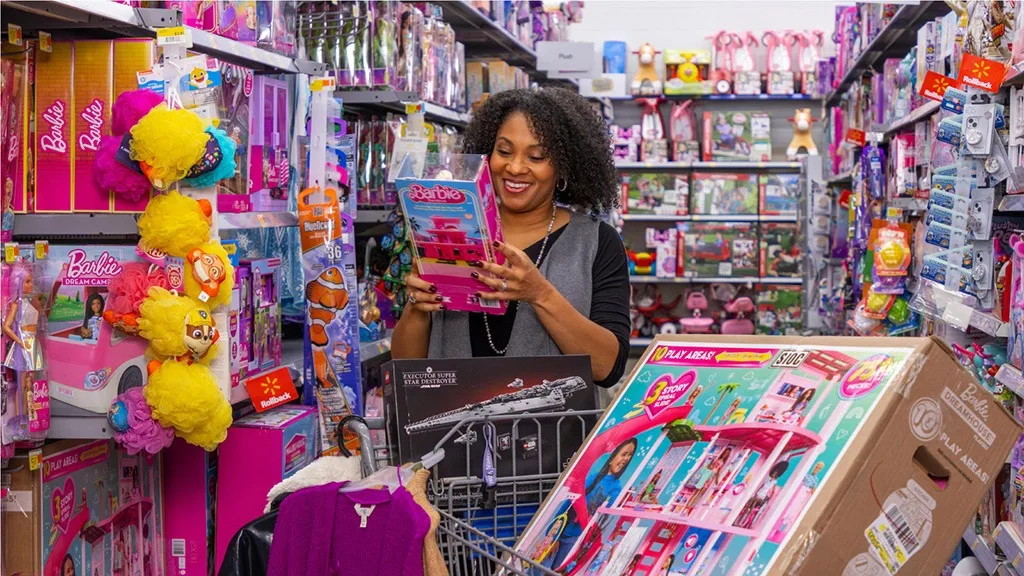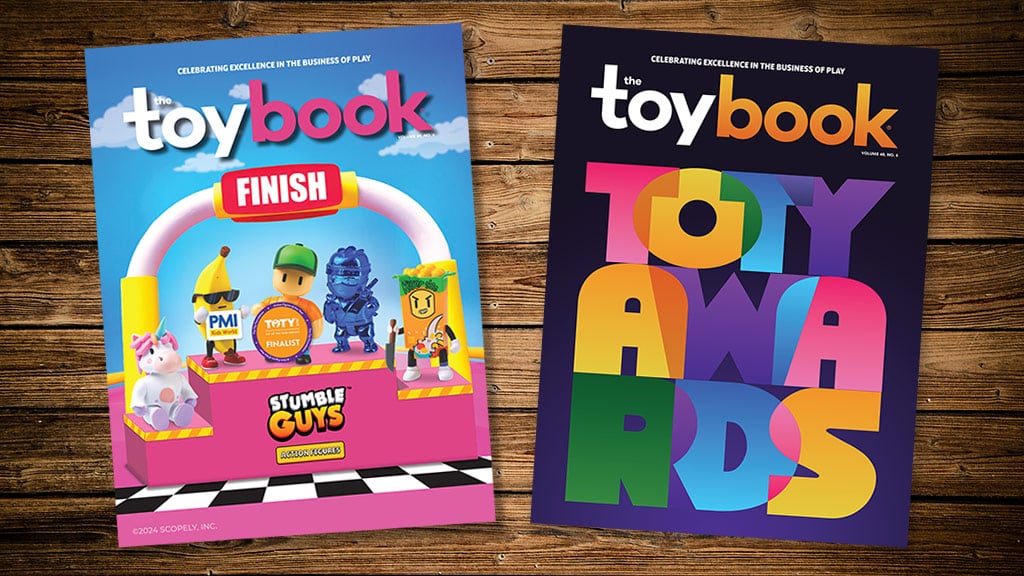Sometimes I feel like a broken record.
As the toy industry and its retail partners reach the halfway point of the fourth quarter and head toward the holiday homestretch, certain terms like “duality” and “mixed messaging” come to mind year after year.
On one hand, current estimates from organizations like the National Retail Federation (NRF) and Adobe Analytics predict record holiday spending. Conversely, post-election consumer confidence still sends mixed messages about what this season will become. With the days of a singular, must-have holiday toy behind us, the season needs excitement across the board — “a rising tide to float all boats,” as many love to say.
Regarding the duality of mixed messages, one need look no further than this week’s Q3 earnings reports from Walmart and Target.
A Tale of Two Titans
Walmart stormed the gate with 5.5% revenue growth to $169.6 billion and a 5.3% spike in comp sales. Walmart President and CEO Doug McMillon praised his associates in the earnings materials and on social media as the company raised guidance for its current year — Fiscal Year 2025.
We had a strong quarter, continuing our momentum. Our associates are working hard to save people time and money and to transform our business. Across markets, we continue to grow, and our newer businesses helped profits grow faster than sales while we worked to lower prices."
“Toys” were mentioned favorably six times on the Walmart earnings call, with strong demand and good comps called out by executives as the company reported a spike in sales for discretionary items for the second consecutive quarter.
On the flip side, Target CEO Brian Cornell blamed “lingering softness in discretionary categories” as part of why comparable store sales dipped 1.9% and total revenue grew by a modest 1.1% to $25.7 billion compared to Q3 last year. In a shocking turn, Target reduced its guidance for the year just three months after raising it.
However, “toys” were also mentioned six times on the Target earnings call, with Rick Gomez, Executive Vice President & Chief Commercial Officer, calling out Spin Master’s Ms. Rachel line as a big hit alongside a host of movie-related products this fall.
“We know consumers don’t want to choose between value and newness. They want both,” Gomez said. “And at Target, they won’t have to choose. Our holiday assortment is our biggest ever, with 50% more new items compared to last year. These include exciting new toys from the biggest brands like Disney, LEGO, and FAO Schwarz, as well as our ‘Only at Target’ brand, GiggleScape.”
Merchandising Mayhem
There is much to be said about the overall consumer experience; this is an area where the needle has flipped over the past few years.
In 2018, the first holiday season without Toys “R” Us in the U.S., retailers of all sizes chased the toy market. They soon discovered that toys are serious business, and most scaled back the following year.
At the time, I went on record stating that Target had won that round in the “toy wars,” but that doesn’t mean they’re winning now. An initial investment in its toy departments led to improved displays, additional square footage, and expanded assortments. But, as I often say, you can’t pile toys and games on a shelf and expect them to sell themselves — and you can’t sell an empty peg hook!
In most of my store checks, Target has been rough the past two years. Messy shelves, freight in the aisles, and a lack of knowledgeable associates in the toy department dimmed the bulbs on the experience. Even the much-touted partnerships with FAO Schwarz and Disney Store have lost their buzz.
The collectibles section, generally tucked on a back wall adjacent to electronics, has become absolute chaos to the point of being unshoppable in many stores. While the inventory turns expected in this section are much lower than in the toy department itself, this zone is jam-packed with products from Funko, NECA, Super7, McFarlane Toys, Bandai, and others while often serving as a dumping ground for stray items that either don’t have a home or got lost on their way to another aisle. On a good day, shoppers won’t find the aisle blocked by incoming shipments tossed into shopping carts or rolling racks on the sales floor (again, broken record). I would be embarrassed if I were a store manager or merchant in this space.
Meanwhile, the Walmart experience has vastly improved.
The turnaround could not be missed on a visit last week to a Walmart Supercenter that I would typically define as a “rough” location.
At 7 p.m. on a Friday, friendly associates were in every department. They were stocking shelves, “zoning” (pulling merchandise forward on shelves/pegs and putting away anything out of place), and assisting shoppers. The toy department probably had the best in-stock levels that I’ve seen in the past three years. Additionally, nearly every checkout lane at the front of the store was staffed by a real live human being.
To win in retail, you have to execute at the store level. This will be key in the next six weeks.
A Warning for the Bullseye
In May, I was reminded of my time with Kmart when Target announced plans to lower prices on more than 5,000 items — a move that it doubled down on last month with news that it would lower prices on another 2,000 items heading into the holiday season. By the end of the year, Target says it will have lowered prices on more than 10,000 items.
You cannot compete with Walmart on price.
Target, like Kmart way back when, had an identity that made it different enough that the U.S. could support rival national retailers and a host of regional competitors. In 2002, Forbes argued that Kmart “lost much of its identity,” amid news that the company lost more than $2 billion in the previous year.
Kmart, which could’ve survived by focusing on what it did well and what it could fix (a post for another day), added an ill-advised, completely unwinnable price war to its list of missteps.
You know how they say that history repeats itself?
The red shirts have some work to do if Target’s gonna get its groove back.
Clean, well-stocked, well-staffed stores with above-average, slightly more-premium trendy merchandise made the difference. While there is absolutely no doubt that there are passionate, great people working on Target’s toy business, that will mean little if the entire enterprise continues to fall out of favor with U.S. consumers and the next Eddie Lampert starts circling.



